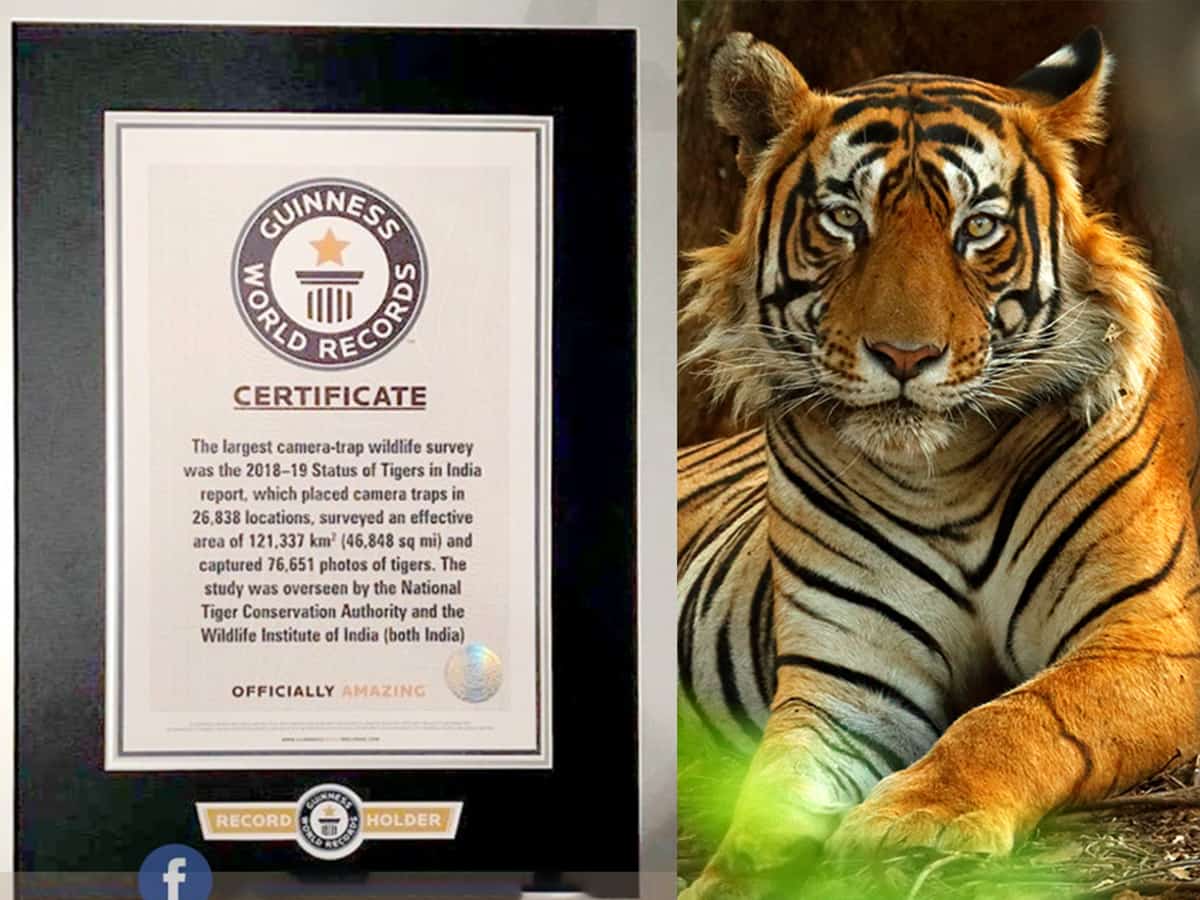New Delhi: The fourth cycle of the All India Tiger Estimation 2018, results of which were declared to the nation on Global Tiger Day last year by Prime Minister Narendra Modi, has now entered the Guinness World Record for being the world’s largest camera trap wildlife survey.
Terming the achievement a great moment, Union Environment Minister Prakash Javadekar said that it is a shining example of “Atmanirbhar Bharat”.
Further, the Environment Minister said that under the leadership of Prime Minister Narendra Modi, India has fulfilled its resolve to double the tiger numbers four years before the target. The country now has an estimated 2,967 tigers as per the latest census.
With this number, India is home to nearly 75 per cent of the global tiger population and has already fulfilled its resolve of doubling tiger numbers, made at St Petersburg in 2010, much before the target year of 2022.
The citation at the Guinness World Record website reads: “The fourth iteration of the survey — conducted in 2018-19 — was the most comprehensive to date, in terms of both resource and data amassed. Camera traps were placed in 26,838 locations across 141 different sites and surveyed an effective area of 121,337 square kilometres.”
It adds, “In total, the camera traps captured 34,858,623 photographs of wildlife, 76,651 of which were tigers and 51,777 were leopards; the remainder were other native fauna. From these photographs, 2,461 individual tigers were identified using stripe-pattern-recognition software.”
The 2018 “Status of Tigers in India” assessment also conducted extensive foot surveys that covered 522,996 km of trails and sampled 317,958 habitat plots for vegetation and prey dung.
It is estimated that the total area of forest studied was 381,200 square kilometre and cumulatively the collection and review of data equated to some 620,795 labour-days.
The All India Tiger Estimation done quadrennially is steered by the National Tiger Conservation Authority with technical backstopping from the Wildlife Institute of India and implemented by State Forest Departments and partners.
The latest results of 2018 had shown that India now has an estimated 2,967 tigers out of which 2,461 individual tigers have been photo captured, a whopping 83 per cent of the tiger population, highlighting the comprehensive nature of the survey.
There is hardly any parallel of such a focused species oriented program like Project Tiger across the world, which started with nine Tiger Reserves, with 50 tiger reserves currently.

